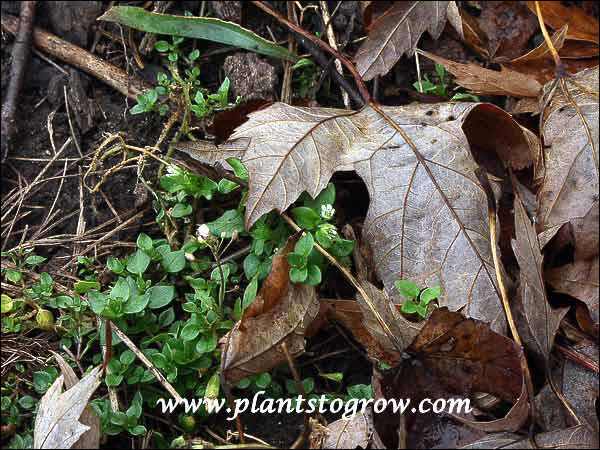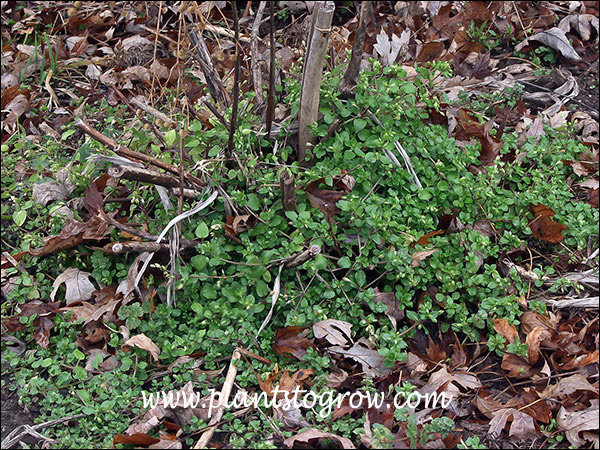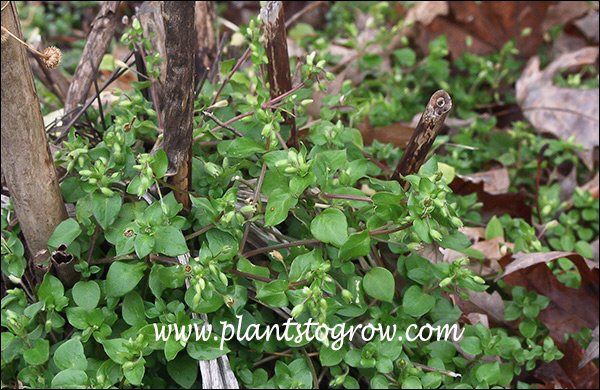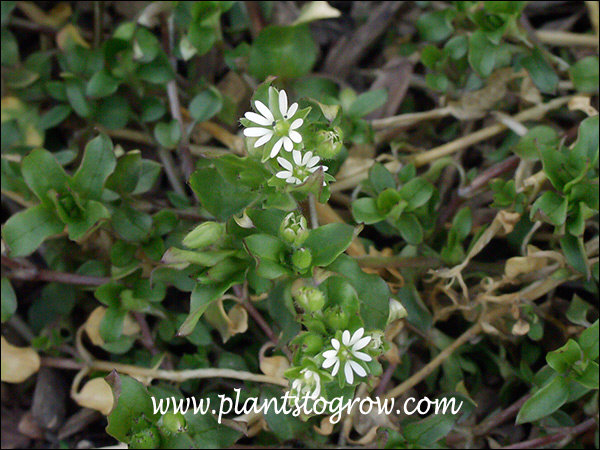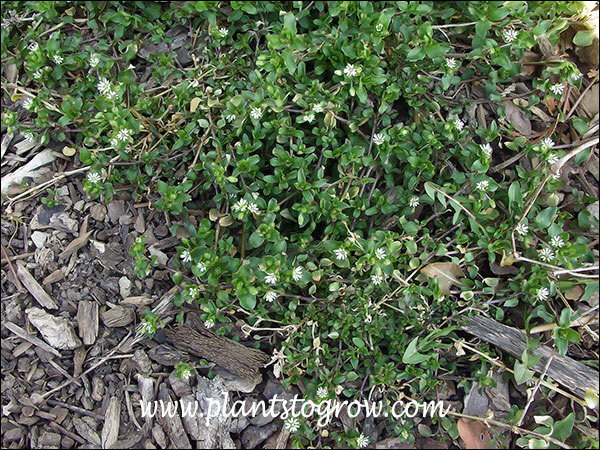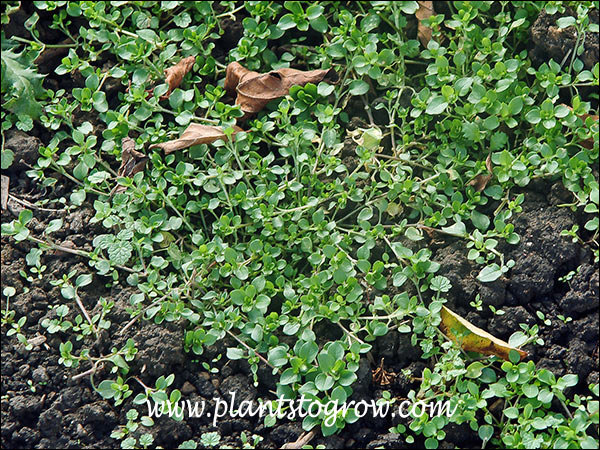| Description | An aggressive, adaptable plant that can quickly become a problem in a garden. |
|---|---|
| Plant Type | Weeds |
| Sunlight | A very adaptable plant. I have seen it growing mostly in semi-shade to full-sun areas, but it is no stranger to the shade. |
| Moisture | Chickweed does reasonably well in dry sites. It has a row of hairs that only appear on one side of the petiole and stem. They readily hold on to moisture that is passed down to leaf stalks that absorb some of the water. The excess is then passed down to the next stalk. Very adaptable to different moisture conditions. |
| Soil & Site | average-waste |
| Flowers | The white star-shaped flowers have five deeply cleft petals found on a terminal leafy cyme. To better assure survival, these plants have a dual seed production method. When insects are present during the warmer times of the year, the flowers will open, produce lots of nectar, and be cross-pollinated. This prevents the inbreeding of the plant. During the colder times, Chickweed will have flowers that will not open (cleistogamous) yet self-pollinate and produce seed. |
| Leaves | Much branched weak stems, trailing, climbing, radiating from a central stem, and rooting at nodes. Forms a thick green mat of foliage. The leaves fold up at night time, enfolding and protecting the tender buds of new shoots (nyctinastic movement) |
| Dimensions | usually forms a mat, stems may reach 16" |
| Maintenance | When I do fall garden clean-ups, this plant will grow happily among the fallen leaves. I dig it out by the central area; it is usually green and succulent. |
| Propagation | seeds |
| Native Site | Chickweeds are found all over the world. |
| Misc Facts | The genus name "stellaria" is derived from the flowers that have a starry-like shape. The common name "Chickweed", may come from the observation that chickens and birds like to peck at the small plants eating the seeds and young shoots. |
| Author's Notes | This plant can be considered a winter annual. It starts growing early in the spring and continues until it is frozen solid. At my nursery, we covered the containers with a layer of micro-foam and plastic. I periodically checked the plants under this cover, and early into the winter and early in the spring, the Chickweed would be growing. |
| Notes & Reference | #19-Common Weeds ( USDA Agricultural Research Service) ,#49-The History and Folklore of North American Wildflowers (Timothy Coffey) |

Cart
